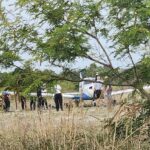SEBASTIAN — On Saturday, March 19, from 10 am to 4 pm, Riverview Park in Sebastian will be hopping with live music, fun activities for the whole family and lots more during the 19th Annual Pelican Island Wildlife Festival. Hosted by the Pelican Island Preservation Society, the U.S. Fish and Wildlife Service, and the City of Sebastian, the event has grown to be one of Florida’s most popular wildlife festivals. The free event focuses on inspiring families to understand nature through environmental education, children activities, outdoor recreation activities and good old-fashioned family fun! Thousands of visitors come to see over 80 environmental exhibitors including live wildlife exhibitors, local environmental and historical organizations, live bands, art and craft vendors and food vendors. Many will take advantage of the pontoon boat and kayak tours to see Pelican Island up close and learn about the history of the nation’s 1st National Wildlife Refuge.
The Pelican Island Wildlife Festival is scheduled each year to commemorate the dedication of the first national wildlife refuge in the United States. Pelican Island acquired its fame at the turn of the century when wildlife photographers and naturalist who visited the area were dismayed to find massive slaughters of pelicans, herons, egrets, and other birds of plume by local hunters. The plumage was being traded for ornamentation on hats.
A local resident, Paul Kroegel whose love for the pelicans drove him to be their staunch protector, enlisted the support of noted ornithologists who helped them establish the Audubon Societies.
At the urging of the MR. Kroegel, the Florida Audubon Society and the American Ornithologists’ Union, President Theodore Roosevelt signed an Executive Order on March 14, 1903 that permanently set aside the three acres island as the first federal bird reservation – a forerunner to the National Wildlife Refuge System.
This was the first time lands had ever been set aside on behalf of wildlife in the United States. Kroegel was then hired and paid $1 a month by the Florida Audubon Society as the refuge’s first manager. Since then the National Wildlife Refuge system has grown to become the world’s largest network of lands managed for wildlife with over 500 refuges totaling 93 million acres.






